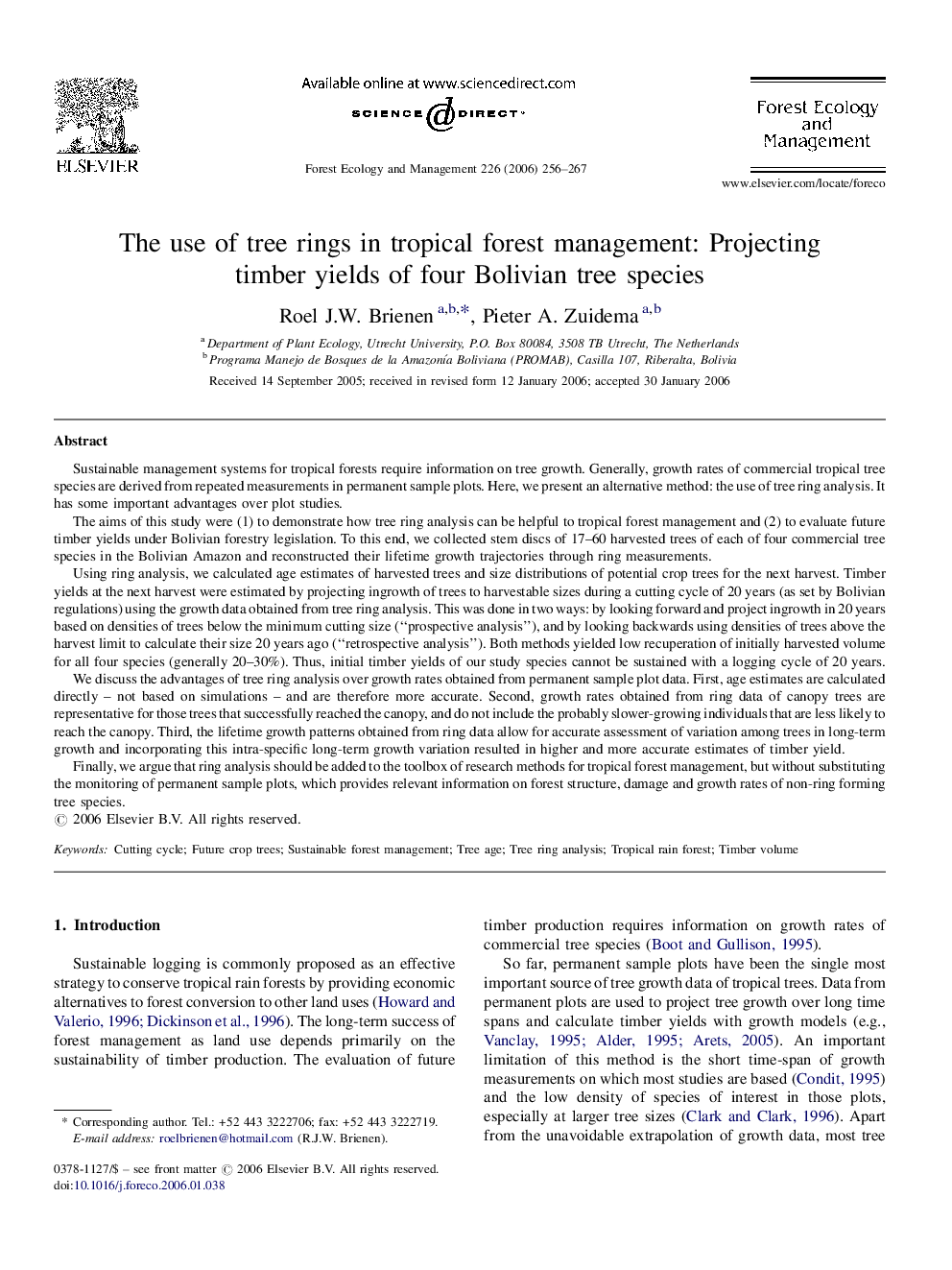| کد مقاله | کد نشریه | سال انتشار | مقاله انگلیسی | نسخه تمام متن |
|---|---|---|---|---|
| 90525 | 159386 | 2006 | 12 صفحه PDF | دانلود رایگان |

Sustainable management systems for tropical forests require information on tree growth. Generally, growth rates of commercial tropical tree species are derived from repeated measurements in permanent sample plots. Here, we present an alternative method: the use of tree ring analysis. It has some important advantages over plot studies.The aims of this study were (1) to demonstrate how tree ring analysis can be helpful to tropical forest management and (2) to evaluate future timber yields under Bolivian forestry legislation. To this end, we collected stem discs of 17–60 harvested trees of each of four commercial tree species in the Bolivian Amazon and reconstructed their lifetime growth trajectories through ring measurements.Using ring analysis, we calculated age estimates of harvested trees and size distributions of potential crop trees for the next harvest. Timber yields at the next harvest were estimated by projecting ingrowth of trees to harvestable sizes during a cutting cycle of 20 years (as set by Bolivian regulations) using the growth data obtained from tree ring analysis. This was done in two ways: by looking forward and project ingrowth in 20 years based on densities of trees below the minimum cutting size (“prospective analysis”), and by looking backwards using densities of trees above the harvest limit to calculate their size 20 years ago (“retrospective analysis”). Both methods yielded low recuperation of initially harvested volume for all four species (generally 20–30%). Thus, initial timber yields of our study species cannot be sustained with a logging cycle of 20 years.We discuss the advantages of tree ring analysis over growth rates obtained from permanent sample plot data. First, age estimates are calculated directly – not based on simulations – and are therefore more accurate. Second, growth rates obtained from ring data of canopy trees are representative for those trees that successfully reached the canopy, and do not include the probably slower-growing individuals that are less likely to reach the canopy. Third, the lifetime growth patterns obtained from ring data allow for accurate assessment of variation among trees in long-term growth and incorporating this intra-specific long-term growth variation resulted in higher and more accurate estimates of timber yield.Finally, we argue that ring analysis should be added to the toolbox of research methods for tropical forest management, but without substituting the monitoring of permanent sample plots, which provides relevant information on forest structure, damage and growth rates of non-ring forming tree species.
Journal: Forest Ecology and Management - Volume 226, Issues 1–3, 1 May 2006, Pages 256–267